The online jungle is huge and busy, and your website is a hidden gem waiting to be found. But, with millions of pages competing for attention, how can you ensure your masterpiece stands out in the crowd? That is where the power of data-driven SEO shines. It’s like having a map and compass in this digital jungle, directing you to traffic, leads, and success. TimesTag! is one of the best Digital marketing agencies in Ahmedabad, India. We are well-known for our excellent Keyword Analysis, offering the best SEO Services to boost your business’s digital growth.
Think of data as your audience’s murmurs. They tell you what they enjoy and dislike, as well as where they spend their time online. By gathering and analyzing these whispers, you can create content that resonates, keywords that entice, and strategies that leave your competitors dumbfounded.
Here’s how data becomes your secret weapon:
Preparation for Keyword Analysis:
Before we go into the specifics of keyword research, let’s go over why it’s so important in SEO. Keywords serve as a bridge between your content and the queries of your target audience.
By strategically incorporating relevant keywords into your content, you enhance its visibility and ensure it reaches the right audience at the right time. At Times Tag!, We are aligning keyword strategy with business goals.
Tools and Technologies:
Below we listed some keyword research tools:-

Google Keyword Planner: This free tool from Google allows users to find new keywords, evaluate previous statistics, and anticipate keyword performance using historical data.
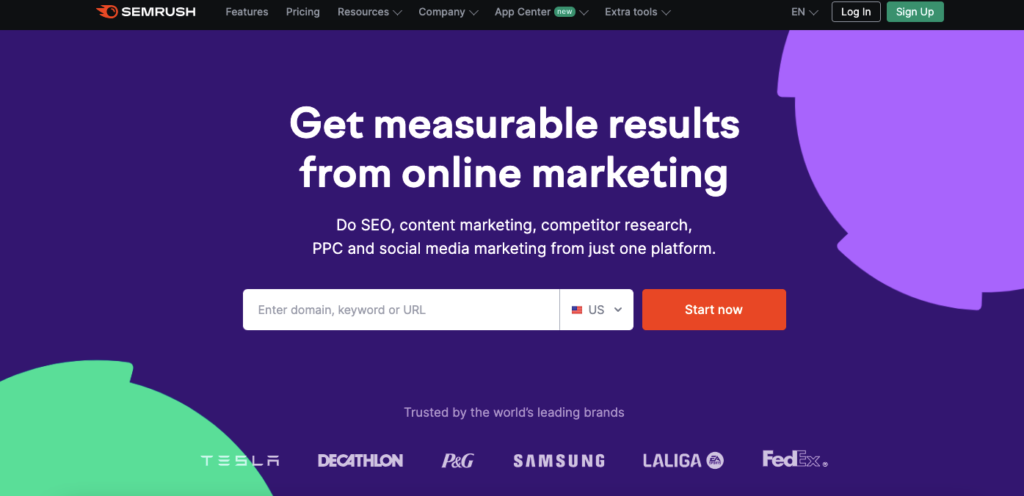
SEMrush: Semrush is a complete SEO tool with a wide range of functions, including keyword research, competition analysis, and link analysis. Its keyword research tool gives detailed information on keyword difficulty, search volume, and related terms, allowing customers to fine-tune their keyword approach efficiently.
Times Tag: offers a comprehensive SEO strategy that offers a multitude of features, including keyword research, competitor analysis, and backlink analysis. Its keyword research tool provides in-depth insights into keyword difficulty, search volume, and related keywords, enabling users to refine their keyword strategy effectively.

KeywordTool.io: KeywordTool.io is a user-friendly keyword research tool that generates keyword suggestions based on Google’s autocomplete feature. It provides a wealth of long-tail keyword ideas, making it ideal for uncovering niche-specific keywords with lower competition.
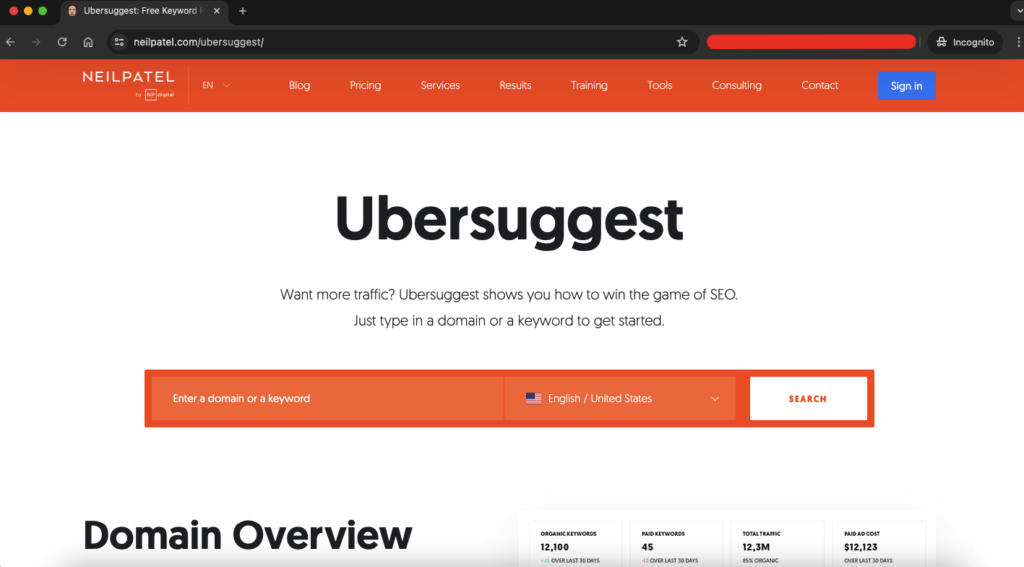
Ubersuggest: Ubersuggest, created by Neil Patel, is a versatile SEO tool that offers keyword research, content ideas, and competitor analysis features. It provides comprehensive keyword data, including search volume, CPC, and keyword difficulty, making it a valuable resource for SEO professionals and content creators.
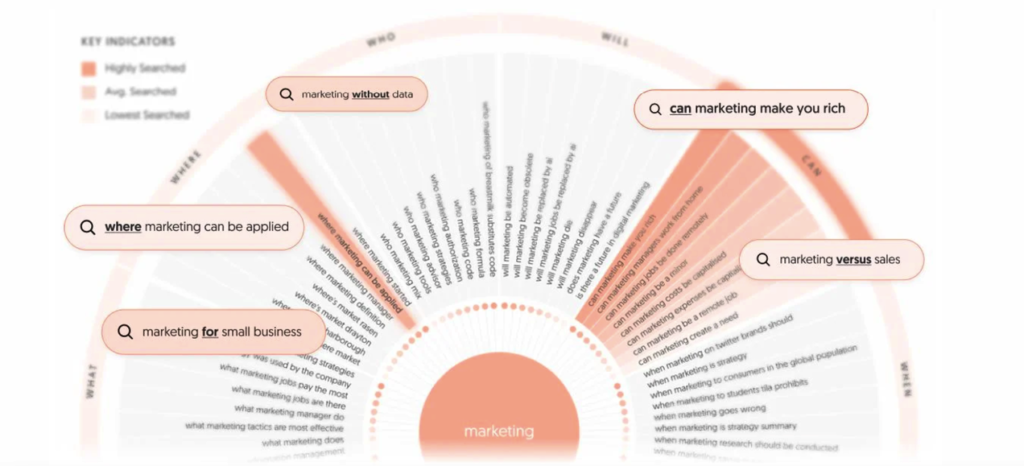
AnswerThePublic: AnswerThePublic is a distinctive keyword research tool that combines search queries from Google and visualizes them in a visually attractive style.
It categorizes keywords based on question words (who, what, where, when, why, how), enabling users to effectively identify common search queries and tailor their content to address user intent.

Google Trends: Google Trends gives information on the popularity of search phrases over time. It enables users to compare search traffic for various phrases, discovers seasonal trends, and assess the significance of keywords in certain areas or sectors.
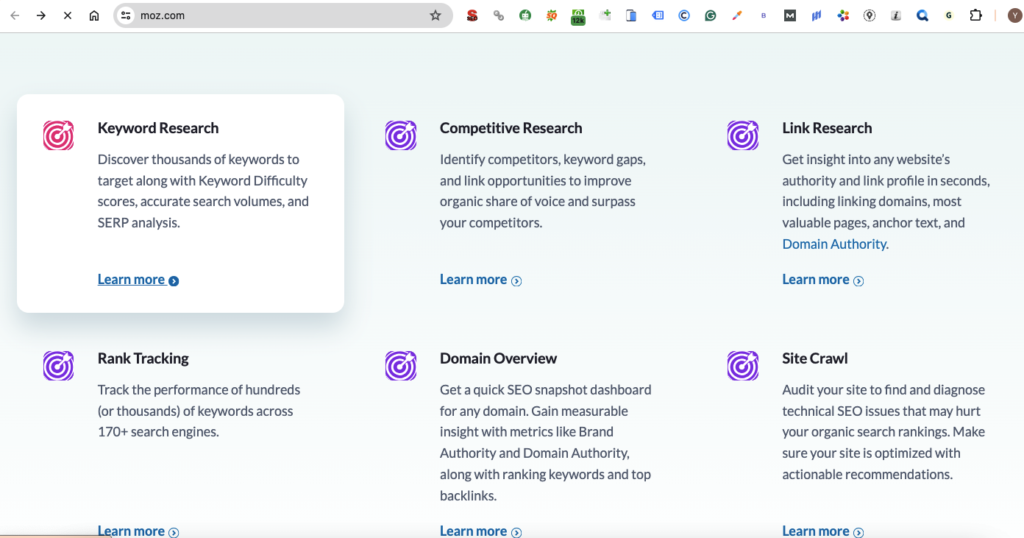
Keyword Explorer by Moz: Moz Keyword Explorer offers comprehensive keyword research capabilities, including keyword difficulty scores, SERP analysis, and keyword suggestions. It provides actionable insights to help users prioritize their keyword targets and optimize their content for maximum visibility.
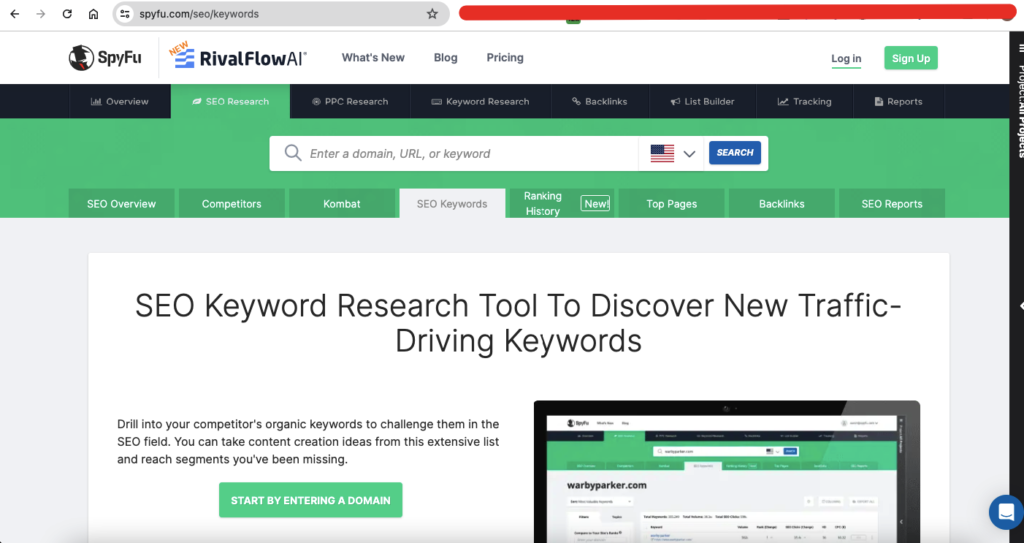
SpyFu: SpyFu is a competitive intelligence tool that allows users to spy on their competitors’ PPC and SEO strategies. It provides valuable insights into the keywords your competitors are targeting, their ad copy variations, and their organic search rankings, enabling you to identify new keyword opportunities and refine your strategy accordingly.

Keyword Surfer: Keyword Surfer is a Chrome extension that overlays keyword data directly onto Google search results. It provides real-time search volume, CPC, and keyword suggestions, allowing users to conduct keyword research seamlessly while browsing the web.
Conducting Keyword Research:
Now that you understand the significance of keyword research and have become acquainted with some of its most significant phrases and concepts, you are ready to begin. Follow these methods to determine which keywords you should target to attract the desired audience and develop a solid keyword strategy.
Create a list of general themes that are pertinent to your issue
In this initial stage, you’ll want to develop a spreadsheet with broad categories or “buckets,” for the phrases you want to rank for. These might match product categories or anything else you think your target audience would be interested in. If you blog sometimes, you may already have certain themes that you cover regularly.
Keep this list brief and basic, containing no more than 5 to 10 themes. It might be beneficial to envision oneself as a customer seeking a product or service.
A website that sells natural and environmentally friendly items may fall into the following general categories:
- Healthy environment
- Natural Health
- Non-toxic home cleaning
- Natural beauty
- Healthy cooking
- Natural pet health
Expand each issue with a list of terms you believe your consumers use
Next, using these broad categories, determine the terms and phrases your target client would use in the search box to find information, goods, or services.
If you already have data from website analytics tools such as Google Analytics or HubSpot’s Sources report, review your organic search traffic bucket to determine the terms that customers use to find your website.
This is not a definitive list of keywords, but rather an opportunity to brainstorm data points that can help your study be more targeted and successful.
For the ecologically friendly website example above, under the category “Healthy environment”, you may list:
- Compare air purifiers
- Best water filters
- Aroma diffuser
- Essential oil diffuser
- Nontoxic paint supplies
- Hypoallergenic pillows
- Natural ways to reduce allergies
- How to improve indoor air
- How to use sage
Create a list for each main category and enter it into your spreadsheet. Feel free to solicit suggestions from coworkers or employees, particularly those who interact with customers.
Discover similar search terms:
There are several inventive approaches to expanding your keyword lists.
- Google a keyword term and scroll to the bottom of the page to view a list of similar search phrases highlighted in bold.
- For a deeper dig, click on one of the related searches and look at the list Google provides at the bottom of the second page.
- AnswerThePublic enables up to three free searches every day. It provides a list of terms that people are looking for connected to your topic.
- You can also type your keyword phrase into Google’s Keyword Planner or one of the paid tools listed below and see what other relevant terms people use.
Analyze the strength of your keywords:
This next step is most easily accomplished with Keyword Planner or a paid keyword research or SEO service. Ahrefs, Semrush, Wordtracker, and Ubersuggest are among the most popular. Wordtracker and Ubersuggest both have free versions you may use to get started.
Keyword Analysis Overview
Identify the exact search term: Ensure your keyword phrase matches the precise search terms people use.
Assess search volume: Look for the highest search volume available to structure a strategy around it.
Assess competition: Look for a balance between high search volume and low organic search competition.
Check for related terms with high search volume and low organic search competition.
Assess your sector ranking
If huge brands dominate the first page of Google for the phrases you’ve picked, adjust your strategy accordingly.
identify less competitive long-tail keywords.
Check the SERPs for your most important search phrases. If it’s dominated by strong brand names with greater impact and market share than your firm (at the time), go back and modify your list using long-tail keywords.
The only exception to this method is if your rivals haven’t been producing high-quality material. If you know you can outperform their content in terms of length, quality, and layout, you might be able to outrank them even if they spend more money marketing their brand.
Verify search intent:
Understanding customer intent is crucial when creating content on Google. By typing keywords into the search engine, you can identify existing pages and their offerings.
Focusing on information rather than selling products can negatively impact your ranking. Instead, deliver a product page that entices a buyer to make a purchase. Keep a spreadsheet or establish a habit to check keyword intent before creating content.
Data-Driven Analysis and Insights
Backlinks are VIP passes to the SEO party, and data helps you snag the best ones. Forget endless, cold outreach. Tools powered by data point you towards high-quality, relevant websites that can boost your authority and send your website skyrocketing in the rankings.
Advances Strategies
In the digital landscape, the shift from traditional keyword staffing to advanced strategies is crucial. Semantic keyword analysis can increase content visibility by simplifying semantic search complexities. In 2024, long-tail keywords will be emphasized, and practical methods for locating and using these complex search phrases will be explored. Voice search optimization is essential due to the increasing prevalence of voice-activated gadgets, impacting SEO significantly. Content should be designed with conversational engagement, technical optimization, and schema markup to provide context for voice inquiries.
Conclusion
Conducting a statistics-pushed keyword analysis in 2024 includes numerous important steps to make sure accuracy and relevance. The process starts off with figuring out middle topics and making use of superior tools to generate a comprehensive list of capability keywords. By studying search volume, competition, and relevance, marketers can pinpoint excessive-fee keywords that align with their audience’s cause.
Integrating facts from gear like Google Analytics, SEMrush, and Ahrefs similarly refines this listing by highlighting performance metrics and trends. It’s vital to always display and alter keyword strategies based on real-time statistics to keep and enhance search engine optimization’s overall performance.
Effective keyword analysis these days leverages AI-pushed insights and predictive analytics to stay ahead in an aggressive virtual landscape. Ultimately, a strong, facts-pushed approach to keyword analysis not simplest complements visibility and engagement but also drives sustainable boom through aligning content with evolving search behaviors and market demands.









